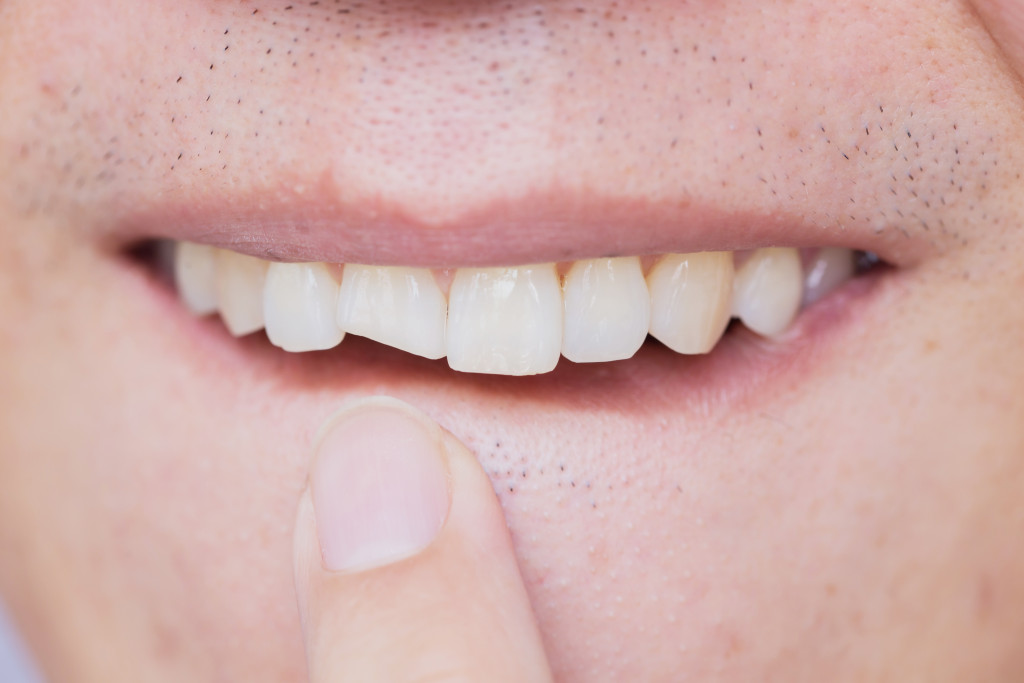Having a cracked tooth can be an uncomfortable and inconvenient experience. Not only can it cause pain, but it also affects your appearance and may require dental work to correct. Depending on the severity of your crack, how you deal with it will vary. Fortunately, there are many ways to address this issue that can help restore both the appearance and function of your tooth. Here are four ways to deal with a cracked tooth.
1. Dental Bonding
Dental bonding is a process where a composite resin material is applied to the affected area of your tooth to protect it from further damage and improve its appearance. The dentist or dental technician will use specialized tools to shape the resin into place before curing it with light. It can fill in cracks, chips, discoloration, and more.
Once the bonding material has been applied and cured, it will need to be polished by the dentist or dental technician to ensure a smooth finish. The polishing process helps to enhance the appearance of the newly bonded area and makes it look more natural. The resin used in dental bonding is durable, so it can stand up to normal wear and tear for several years without needing additional maintenance.
Dental bonding is affordable for people who want to repair minor tooth issues but don’t want to spend much money on costly procedures like veneers or crowns. It usually only takes one appointment at the dentist’s office to complete the entire process from start to finish, making it a convenient
2. Get Dental Coating
One of the most effective ways to deal with a cracked tooth is to get a dental coating. Dental coatings are thin layers of material applied directly to your teeth’s surface. They act as a protective barrier, shielding the enamel from damaging bacteria and providing an extra layer of strength against further cracking and wear.
Common types of dental coatings include fluoride, sealants, and veneers. Each type has different properties that make it suitable for treating various cracks. Fluoride-based coatings provide additional protection against decay, while sealants form a waterproof barrier that can prevent bacteria from getting into tiny gaps in your teeth.
Veneers are also dental coatings that provide additional strength and can be used in more severe cases where bonding or other treatments are impossible. They are made from a thin layer of porcelain bonded onto your tooth’s surface and can be colored to match the existing color of your teeth for improved aesthetics.
3. Root Canal Therapy

Root canal therapy is where the dentist removes the damaged pulp (the soft tissue inside your tooth) and seals off the hollow area with unique dental materials. This can help relieve pain associated with cracked teeth and prevent further damage.
The dentist will first examine the tooth and take an X-ray to determine the extent of the damage. Your dentist may recommend a root canal procedure if the damage is severe. The dentist drills into your tooth to expose the pulp during this procedure. The infected tissue is then carefully removed with special dental instruments.
Once the damaged material is cleared, your dentist will fill the space with a unique sealant material known as gutta-percha. This material helps to prevent bacteria from entering and causing further damage inside your tooth. Afterward, a crown or other restoration, such as a filling, may be placed on top of the treated area for protection and aesthetics.
4. Tooth Extraction
The last option is to extract the tooth altogether if necessary. Depending on the severity of the crack, this may be the only viable solution to prevent further pain or damage from occurring in the future.
Extractions can be performed with a local anesthetic, meaning the patient remains awake. The area may also be numbed before the procedure for added comfort. During extraction, a dental tool is used to loosen and remove the tooth from its socket in the bone. This process usually takes around 30 minutes or less, depending on the case’s complexity.
Afterward, gauze is placed over the site to help control bleeding and encourage blood clotting at this new wound. It’s important to follow post-operative instructions from your dentist carefully; it will help ensure proper healing after tooth extraction.
After the procedure, one should expect pain and swelling in the extraction area. Your dentist may prescribe painkillers or other medications to help with discomfort. Additionally, a soft diet is recommended for at least 24 hours following tooth extraction. This allows the wound to heal correctly without food particles getting stuck.
In Summary
A cracked tooth can be a painful and inconvenient experience, but there are many ways to address this issue, depending on how severe it is. Dental bonding, veneers, root canal therapy, crowns, and even extraction may all be options depending on the extent of your problem. By seeking professional advice and acting quickly to address any issues, you can help restore the appearance and function of your tooth.
